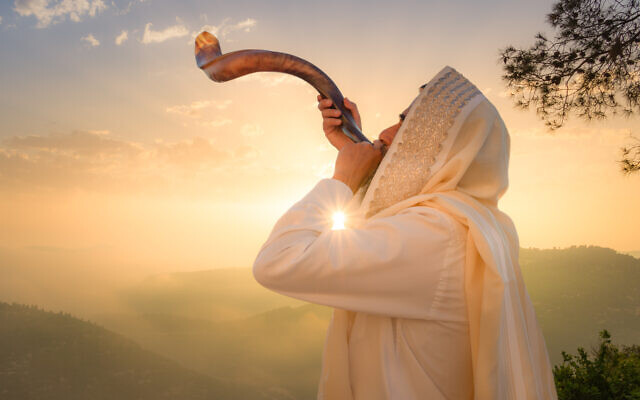The Meaning of Yom Kippur
Lovingly Composed by Sheri Rosenblum
The Meaning of Yom Kippur
It is the holiest day of the Jewish calendar,
It culminates the 10 Days of Awe.
September 24-25 marks this year’s date.
The very first Yom Kippur happened when the Israelites left Egypt and wandered the desert for 40 days.
Moses received the 10 Commandments, from G-d, and descended Mt Sinai,
He shattered the 10 Commandments because he was horrified.
He witnessed the Israelites worshipping a golden calf!
The Israelites atoned, Moses received another 10 Commandments, on their behalf.
The High Priest was allowed to enter the Holy Temple, only on Yom Kippur,
This is according to Biblical Folklore.
To the first goat, Israel’s sins, the Priest would confess,
It became the scapegoat and died in the wilderness.
The second goat was sacrificed on the alter, and its blood was sprinkled on the Ark of Covenant,
This is how the entire Nation of Israelites went through atonement.
Who will live and who will die?
It is up to the omnipotent G-d to decide.
His “Books of Life” are open on Rosh Hashanah and on Yom Kippur they are closed.
All Jews have 10 days to make amends and atone.
The evening of Yom Kippur, prior to sunset, begins with a prayer, Kol Nidrei, it is chanted three times,
It translates to “All Vows” and dates to medieval times.
To avoid persecution and death, Jews converted and swore vows to another religion,
When the danger passed, the converts asked to be forgiven.
The Jewish tradition views verbal promises seriously,
Kol Nidrei’s legal formula was developed precisely.
It enabled the forced converts to return to Judaism and pray,
Because of their duress, it absolved their vows away.
Now to have a fresh year, it annuls our prior year’s vows, with a clean slate.
Most of the day is spent in Shul, praying and repenting,
The Torah states a necessary component is fasting.
“The Day of Atonement should be a day of self-denial,”
Wearing white symbolizes purity and the white robes worn are called Kittel.
It used to be a sign of wealth, in your leather shoes,
Wearing sneakers or canvas, the notion was diffused.
Both Torah readings come from Vayikrah, are instrumental,
The first are instructions to Moshe and Aharon about how the priestly service should be procedural.
The second reading deals with forbidden relationships that are sexual.
The Haftorah reading is from the Book of Jonah,
It deals with G-d’s desire to help man rather than punish him. Also, the power of Teshuva.
Yizkor comes after the morning Torah readings,
Children and members, who still have living parents, the sanctuary they would leave.
Yizkor means “May G-d remember,” from the Hebrew word Zachor.
Originally, Yizkor was said only on Yom Kippur.
The main purpose was to honor the deceased and their memory by giving Tzedakah.
The 1st Yizkors were to remember and honor those killed in progroms and Crusades, in the 12th Century.
Over the years, it is to remember our own loved ones and the Jewish martyrs, who fought valiantly.
Life is hard and oh so cruel,
In our mind’s eye, they remain our own sparkling jewel!
Ashamnu, ‘We have sinned,” and Al Chet, “For the sin,” these 2 prayers comprise the Jewish confession.
We pour out our hearts, by striking our hearts to G-d, who is dwelling in Shanayin, Hebrew for heaven.
We, as a congregation, seek G-d for us to be forgiven,
The prayers are alphabetically acrostically written.
All confessions are directed towards G-d, personally,
If you wronged a person, you must make amends individually.
“For the sin which we committed before you…”
“For all these, G-d of pardon, pardon us, forgive us, atone for us…”
Neilah Service – ‘The Closing of the Gate’”
As concluding Yom Kippur, Neilah is the most sacred and is expressed in melodies of great solemnity,
We stand for the Amidah and the Ark remains open the entire service. There is a sense of urgency.
The Book and the Gate are about to be closed. A wonderful religious imagery.
In conclusion, The Shofar blows with one long shrill!
The final prayer: Le’shanah ha-ba’ah be Yerushalayim.
Next Year may we be in Jerusalem.
Break-the-Fast: After sundown, where family and friends gather to eat after 25 hours!
Jews throughout the ages, have atoned on, the solemn day of Yom Kippur. A day of communal confessions, heartfelt prayers, and 25 hours of fasting. Our lives have been sealed in the Book of Life. We now turn to a New Year replete with goodness, happiness and tzedakah.
Lovingly Composed by Sheri Rosenblum
10-11 Tishre 5784
Five Services of Yom Kippur
Kol Nidrei
Musaf
Shacharit
Minchah
Ne’ilah




comments